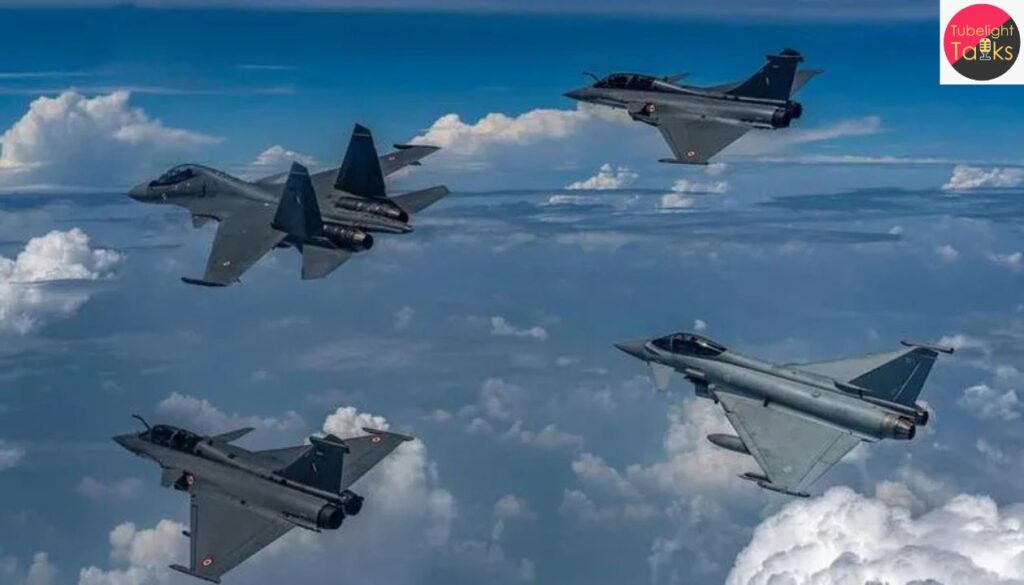India’s Exercise Trishul: India has embarked on a pivotal military drill—Exercise Trishul—marking a significant step in the evolution of joint operations by its three armed services. Scheduled from 30 October to 10 November 2025, the exercise spans one of India’s most sensitive western frontiers near Gujarat’s Sir Creek and the Rann of Kutch region.
Strategic Context of the Drill
Location & Geopolitical Significance
The chosen theatre for Ex Trishul is the marshy, salt‑crusted expanse of the Sir Creek region—a narrow and complex boundary zone between India and Pakistan. Analysts consider the area highly strategic due to its terrain, access to the Arabian Sea and historical incursions via boats and small craft.
Why Now?
The drill follows heightened regional tensions and recent cross‑border activity. Indian defence leadership has emphasised that future security depends on seamless joint operations across land, sea and air—especially in hybrid‑warfare contexts.
Exercise Details and Operational Scope

Joint Forces & Multi‑Domain Operations
According to the Ministry of Defence, Exercise Trishul will deploy the Indian Army, Navy and Air Force in synchronized operations. Key components highlight:
- Amphibious landings and coastal operations off the Saurashtra‑Kutch coast.
- Creeks & marshland manoeuvres in Sir Creek region.
- Multi‑domain operations including Intelligence Surveillance & Reconnaissance (ISR), Cyber and Electronic Warfare (EW).
Airspace Reservations & Scale
A NOTAM has reserved substantial airspace (up to 28,000 ft) for the exercise period, indicating the scale of air‑operations undertaken.
This reserve of airspace underscores the integration of aircraft, drones and UAVs with ground and naval forces.
Indigenous Systems & Atmanirbharta Focus
The defence ministry emphasises that Ex Trishul will foreground India’s “Aatmanirbharta” drive—validating indigenous weapons, sensors and platforms under operational deployment.
Implications for Defence & Security
Enhanced Jointness and War‑fighting Readiness
The scale of Ex Trishul indicates India’s commitment to integrated theatre command concepts and elimination of service silos—key components of modern war‑fighting doctrine.
Deterrence Posture
Conducting a major tri‑service drill in a border‑sensitive area sends a strategic message of readiness and deterrence. Pakistani sources reportedly responded with airspace restrictions, signalling concern.
Operational Learning for Varied Terrain
The choice of diverse terrain—from creeks to coastal deserts—allows armed forces to practice rapid deployment, amphibious operations and hybrid‑threat responses under challenging conditions.
Challenges & Areas to Watch
Logistical Complexity
Amphibious manoeuvres, multi‑domain coordination and large‑scale theatre operations pose logistical and command‑and‑control challenges.
Sustaining Readiness Beyond the Exercise
While large drills provide burst readiness, maintaining sustained joint capability in peacetime remains a structural challenge.
Regional Signalling vs. Escalation Risks
While the exercise serves deterrence, it also risks signalling escalation in a sensitive border area—requiring balanced diplomacy and operational clarity.
Also Read: US Deploys World’s Largest Aircraft Carrier to Caribbean Amid Venezuela Tensions
Defence and Duty
The teachings of Sant Rampal Ji Maharaj offer a deeper dimension to military preparedness: true strength lies not only in weapons or numbers, but in service, restraint and protection of human dignity. In the context of Exercise Trishul, the focus on jointness, self‑reliance and technological innovation aligns with the idea that defence must protect life, foster security and sustain peace—not merely showcase power. The intrinsic message: when forces act for the welfare of the nation and its people, operational readiness becomes ethical duty and mindful service.
What to Monitor Going Forward
- The official after‑action report: What lessons does the ministry share?
- What indigenous systems were deployed and validated during the exercise?
- How will the concept of theatre commands or joint commands evolve from this exercise?
- What diplomatic or regional reactions follow the drill?
FAQs: Exercise Trishul – Key Facts
Q1. When does Exercise Trishul take place?
30 October to 10 November 2025.
Q2. Which armed services are participating?
The Indian Army, Navy and Air Force.
Q3. Where is the drill located?
Along India’s western frontier, especially the Sir Creek/Kutch region in Gujarat and adjoining coastal sectors.
Q4. What is the primary objective?
To test joint war‑fighting capabilities, validate indigenous systems and enhance multi‑domain operational readiness.
Q5. Why is this exercise strategically significant?
It signals enhanced jointness among services, reinforces India’s deterrence posture along a sensitive frontier, and underlines operational self‑reliance.










